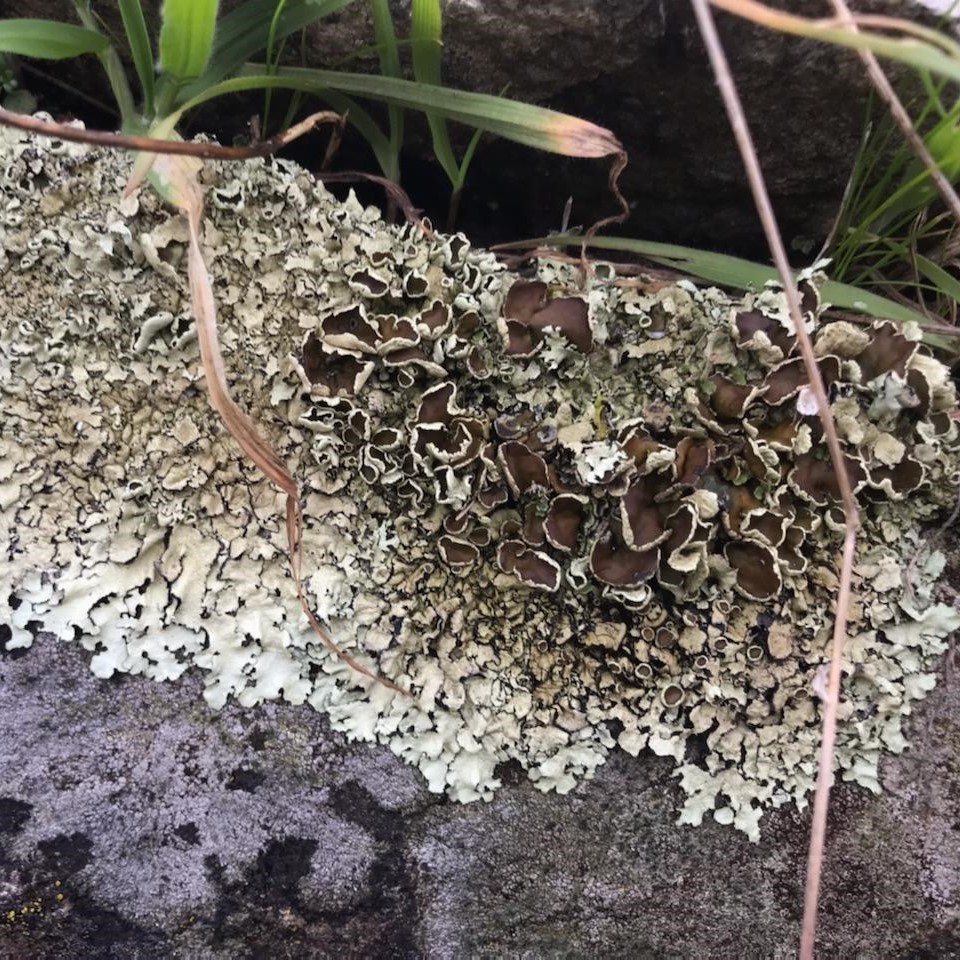By Rob Roy McGregor, SJPT Land Steward
Last winter, I became a bit obsessed with lichens, and like a mad numerologist fixated on a specific number, I can’t help but notice them wherever I go. I see them on the sidewalk and the sides of buildings when I’m in town, on rocky outcrops and boulders, on nearly every tree I look at, on the shoreline, and old split-rail fences. The more I learn about lichens, the more I realize how abundant they are, and the more I become interested in this organism of many forms.
More than meets the eye
A lichen is not just one living thing, it is a fungus living symbiotically with a photosynthetic organism. Most often the photosynthetic partner is an algae, though sometimes it is a cyanobacteria, and sometimes it’s both. Like humans, fungi are heterotrophs, which are organisms that cannot produce their own food and, instead, obtain their nutrition by eating other organisms. Just like we need to eat food to survive, so does a fungus. Non-lichenized fungi feed on decaying or living organisms. Algae and cyanobacteria, like plants, are photosynthetic autotrophs, meaning they can produce their own food by using energy from sunlight to turn water and simple carbon sources, such as carbon dioxide, into complex sugars. Lichenized fungi incorporate algae and/or cyanobacteria into their bodies, providing a suitable environment for the photosynthetic organisms. In return they receive a direct supply of complex sugars from the algae and or cyanobacteria. In this way a lichen is more like a miniature ecosystem, or in the words of famed lichenologist Trevor Goward, “Lichen are fungi that have discovered agriculture.” Living together as a lichen, these organisms can live in a wider range of conditions than any one of the partners on its own.
Survivors
Lichens can grow on most surfaces because they derive almost all their water and nutrients from the atmosphere and photosynthesis. (This is not to say that any lichen can grow on any surface; lichen species often prefer one surface over another. More on that later.) Another trait that allows lichens to live in a wide range of conditions is their ability to go dormant. Lichens’ internal moisture content is directly tied to the atmospheric moisture. When it’s rainy or very humid outside, the lichen soaks up that moisture like a sponge and becomes photosynthetically active. When the air is dry the lichen cannot retain its moisture and it will dry out and become dormant. Lichen can remain dormant for months or even years. When wetted with moisture they can very quickly snap back to life and start photosynthesizing within minutes. Because of this lifestyle, lichens are generally very slow growing, with annual growth rates measured in millimeters. At the same time, this very trait is what allows some lichen to survive harsh conditions and live very long lives. For example, some lichens have been estimated to be over 8,000 years old, and others have survived the extraordinarily harsh conditions of space in experiments by the European Space Agency.
Form and function
The body of a lichen is structured in such a way as to provide access to light, screening from harmful UV rays, optimal moisture, and gas exchange to the photosynthetic partner so it can thrive and produce food for both organisms to feed on. Interestingly, when scientists culture the fungal partners in labs on their own, they look completely unlike the lichen formed when bonded with the photosynthetic partner. Lichens come in a wide variety of colors and shapes, but their growth forms are generally lumped into three broad categories: crustose, foliose, and fruticose. Crustose lichens grow tightly to their substrate (growing surface). If you tried to take a knife and peel the lichen away from the surface, you would not be able to. Foliose lichens are generally leaf-like and have a distinct upper and lower surface: When these are growing flat against a substrate, you could still slide a knife or thin ruler underneath the thallus. Fruticose lichens come in a wide variety of shapes but are generally bushy or coral-like in nature. Unlike the foliose lichens, they generally do not have distinct upper and lower surfaces.
Lichens are often a pale green color, but species can also be white, black, brown, chartreuse, yellow, orange, blue, and red. These pigments typically come from a group of chemicals called secondary metabolites. These chemicals have many functions, including acting as a natural sunscreen, protecting the organisms from excessive ultraviolet radiation.
Wherever you go, there they are
Lichens are found on every continent, including Antarctica. Different lichen species are specialized for different environments, but wherever you go you’ll find a lichen nearby. Lichens are most often found in places where vascular plants cannot gain a foothold—generally places where there is very little soil, such as rock surfaces, tree bark, or human-made structures like sidewalks, old signs, glass, barns, and neglected cars.
One of the great things about lichens is that they grow in so many different habitats. Not only are there lichens specialized for deserts, forests, bogs, shorelines, and mountaintops, but within each habitat there are numerous microhabitats that different lichen species are specially adapted to. In the span of 20 feet, you could have 20 different habitats or more. While some lichen species are content to grow on just about any surface if they have the appropriate light, moisture, and nutrients, many lichens have strong preferences for specific substrates. Some lichens only grow on rocks. Within that group, some prefer rocks with lots of calcium, like limestone, while others prefer rocks with lots of silica, like granites. Other lichens prefer to grow on tree bark. Some prefer conifers, some prefer broadleaved trees, and others grow on dead wood. There are lichens that grow on soils and lichens that grow on moss. Some lichens only grow on resin flowing down trunks of old trees, and others grow on driftwood in the upper intertidal zone. There are “vagrant” lichens that roll around in the wind like tumbleweeds, and even lichens that grow on other lichens! Add in different preferences for amounts of light and moisture and you can see how quickly the number of growing niches compounds!
Considering their wide variety of growth forms and habitat preferences, you’d be correct in assuming that there are many species of lichen. In the Pacific Northwest alone, more than 1,980 species have been identified, and new ones are identified every year.
Tough, but not invincible
Despite their long lives and ability to go dormant when conditions aren’t ideal, lichens are not invincible—far from it. In some ways they are quite sensitive organisms. Because lichens soak up nutrients from the atmosphere, many species are sensitive to air pollution, such as car exhaust, atmospheric nitrogen from fertilizers and manure, and factory emissions. Trampling by people, bikes, or vehicles can also kill lichens, and because they grow so slowly it can take decades for a population to recover. This is one reason why it’s important to never go off-trail when visiting nature preserves, and why you should never collect or remove lichen from their substrates.
See for yourself
While lichens can be found easily all year long, autumn and winter are a fantastic time to observe them. For one, the powerful nor’easters that bring down trees and branches this time of year give us the opportunity to see species that only grow high up in the canopies of trees. Another reason the rainy season is a great time to view lichens is that when lichens are wet, their colors are significantly more vivid and beautiful.
No tools are necessary to observe and appreciate lichens, but one relatively inexpensive tool that will allow you to see the incredible structural details of lichens is a hand lens. A hand lens, or loupe, is a type magnifying glass that allows you to see the various structures of lichens in detail not possible with the naked eye or a traditional magnifying lens.
Even an apparently simple crustose lichen has exquisite detail when magnified. Hand lenses are also great for observing moss, insects, rocks, and plants. If you are interested in botany, hand lenses are very useful for identifying plants to the species level. A decent hand lens can be purchased for as little as $15 and a nice one for about $40 (I’m fond of the Belomo 10x Triplet loupe). When purchasing one, all you need is 10x magnification. Higher magnifications can be useful, but they come with major compromises in light and viewing area. As a bonus, if you hold the hand lens up to your phone camera you can take incredible “macro” photos, which are useful if you use apps like iNaturalist for identifying organisms.
In addition to a hand lens, a field guide like Macrolichens of the Pacific Northwest by Bruce McCune and Linda Geiser is invaluable for understanding what you’re looking at. If you want to go deeper, an excellent reference for lichens of the San Juan archipelago is The Lichens of the Coastal Douglas-fir Dry Subzone of British Columbia, by Willa Jane Noble.
Next time you’re outside, take a moment to appreciate the rich, microcosmic world of lichens surrounding you. If you’re like me, you won’t be able to help it.
References:
Lichen Biology, ed. Thomas H. Nash III., Cambridge University Press, 2010
Macrolichens of the Pacific Northwest, Bruce McCune and Linda Geiser, OSU Press, 2014
Common Macrolichens of the Pacific Northwest, Bruce McCune and Sunia Yang, https://lichens.twinferntech.net/pnw/, 2019-2021
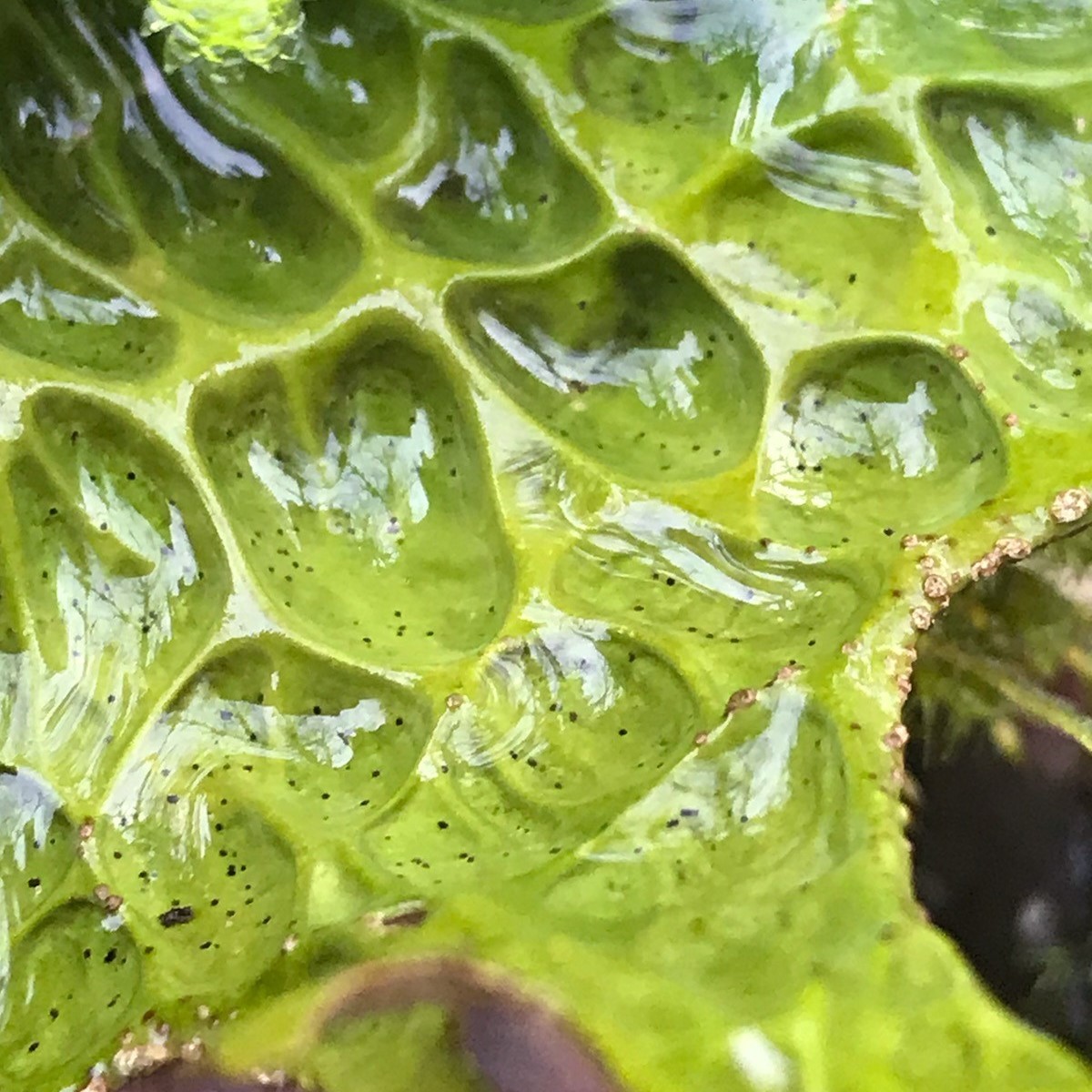
Lobaria pulmonaria (tree lungwort)
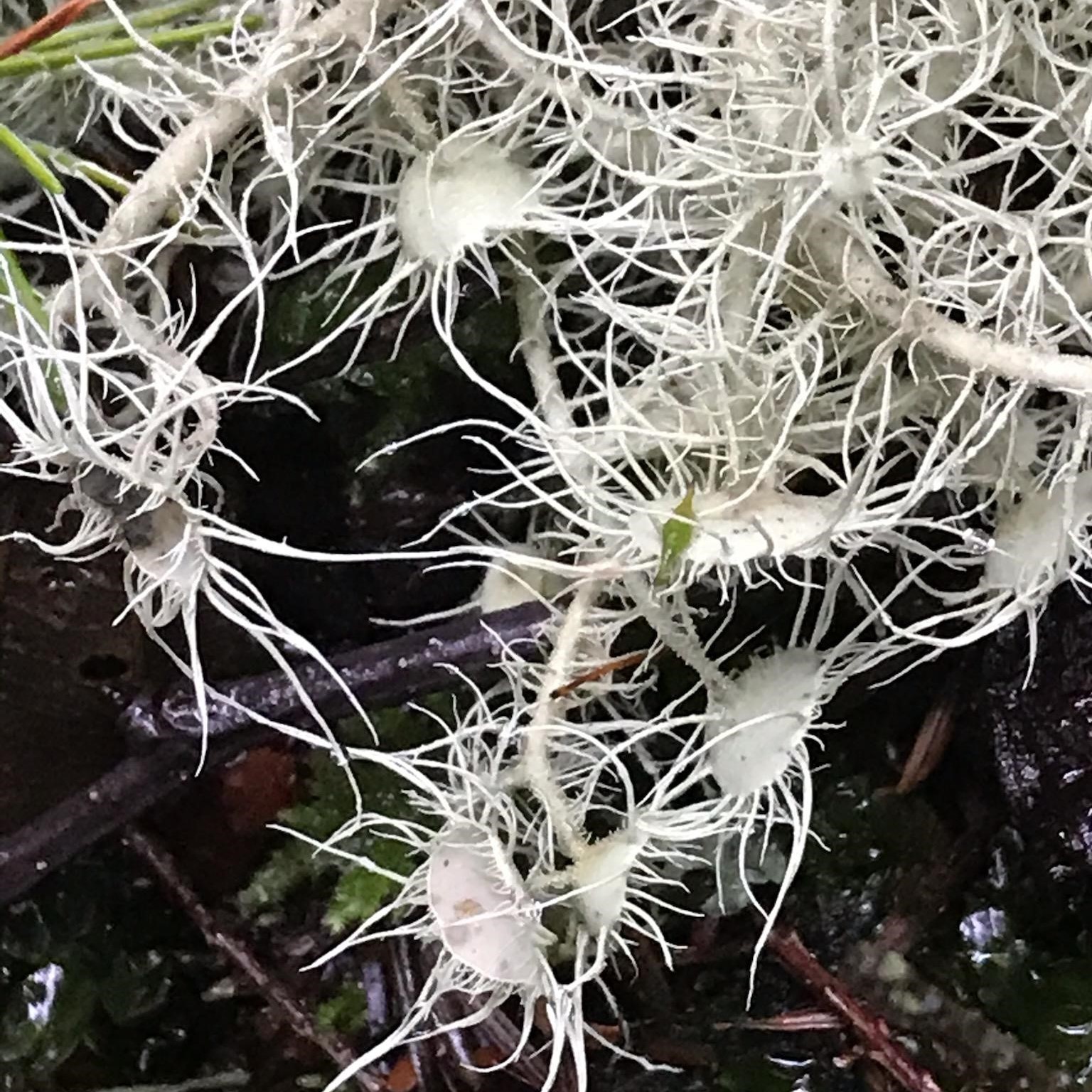
Usnea quasirigida (eyed beard)
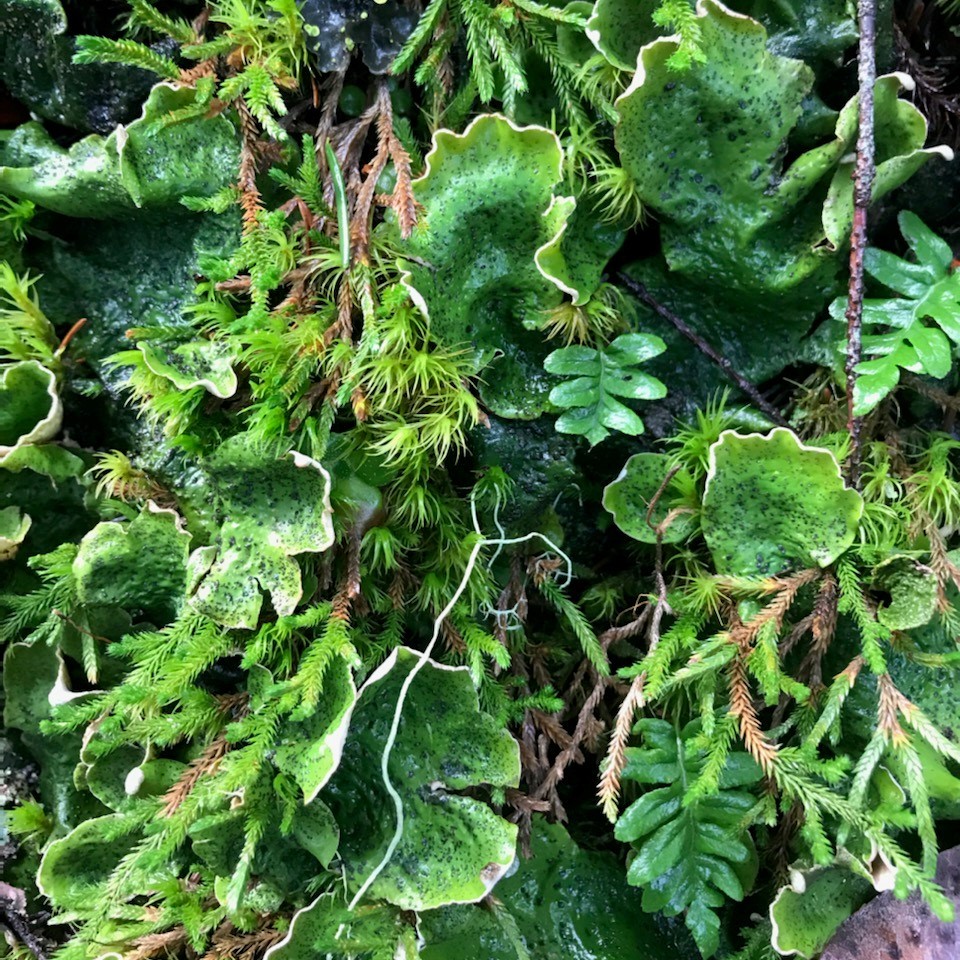
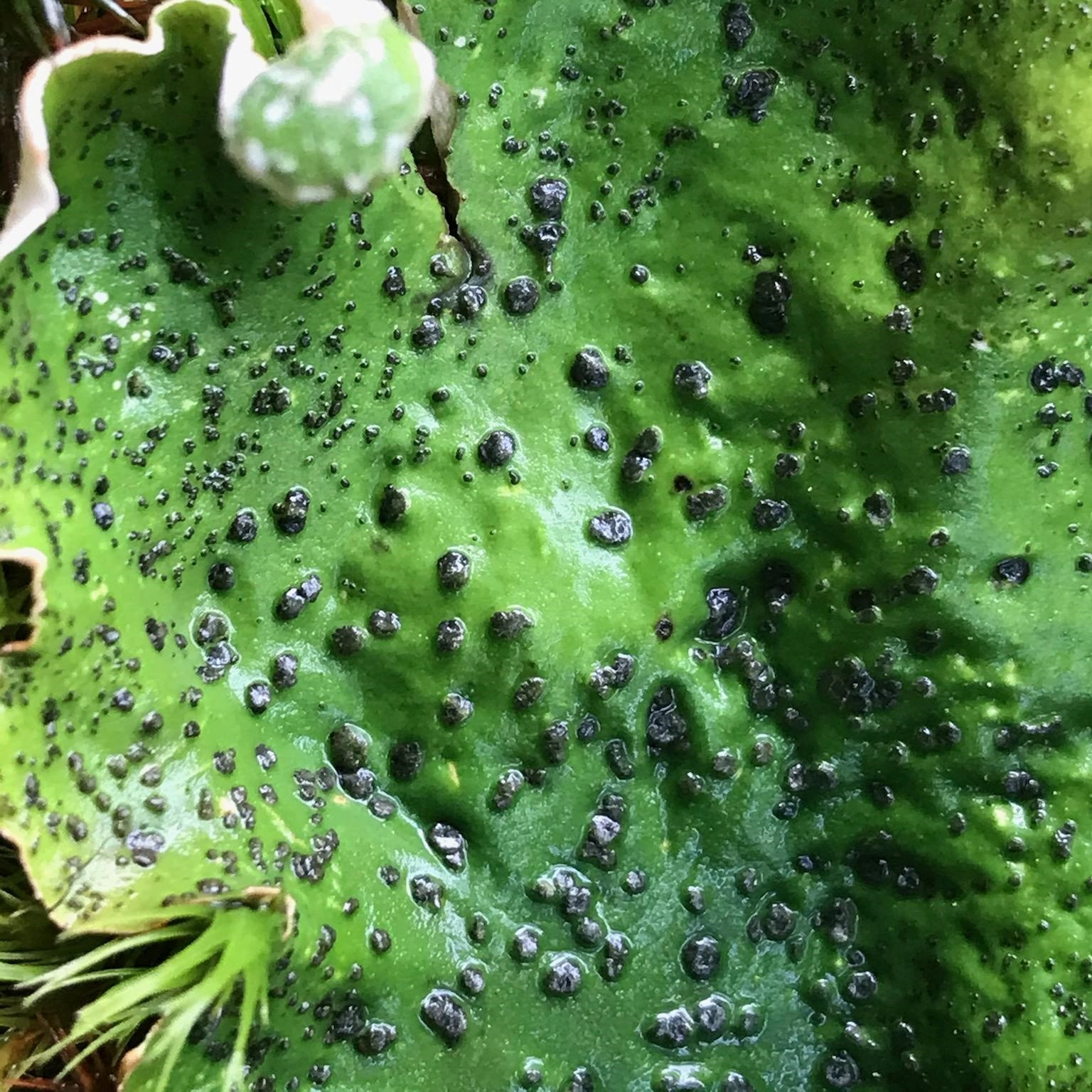
Peltigera species
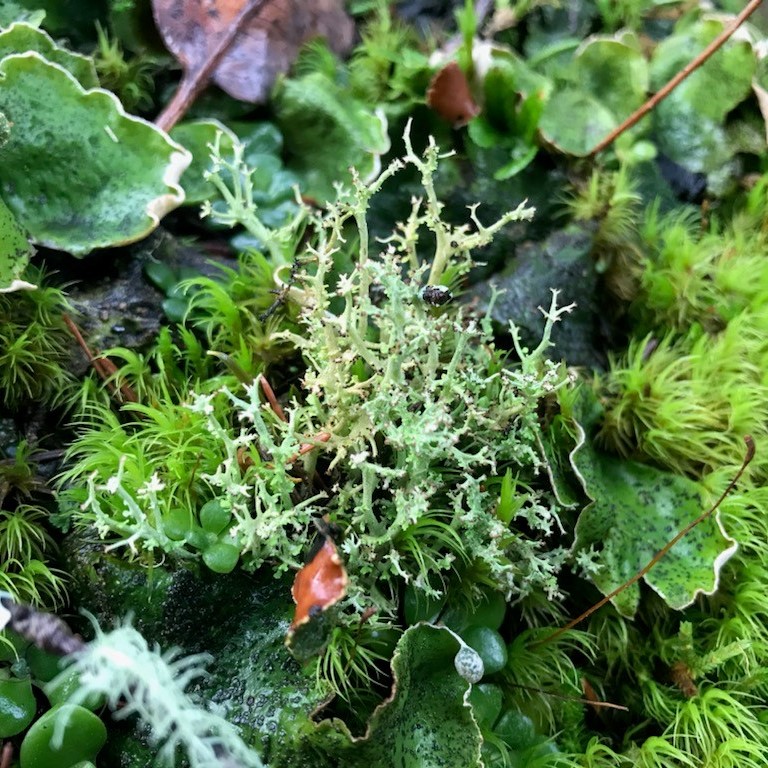
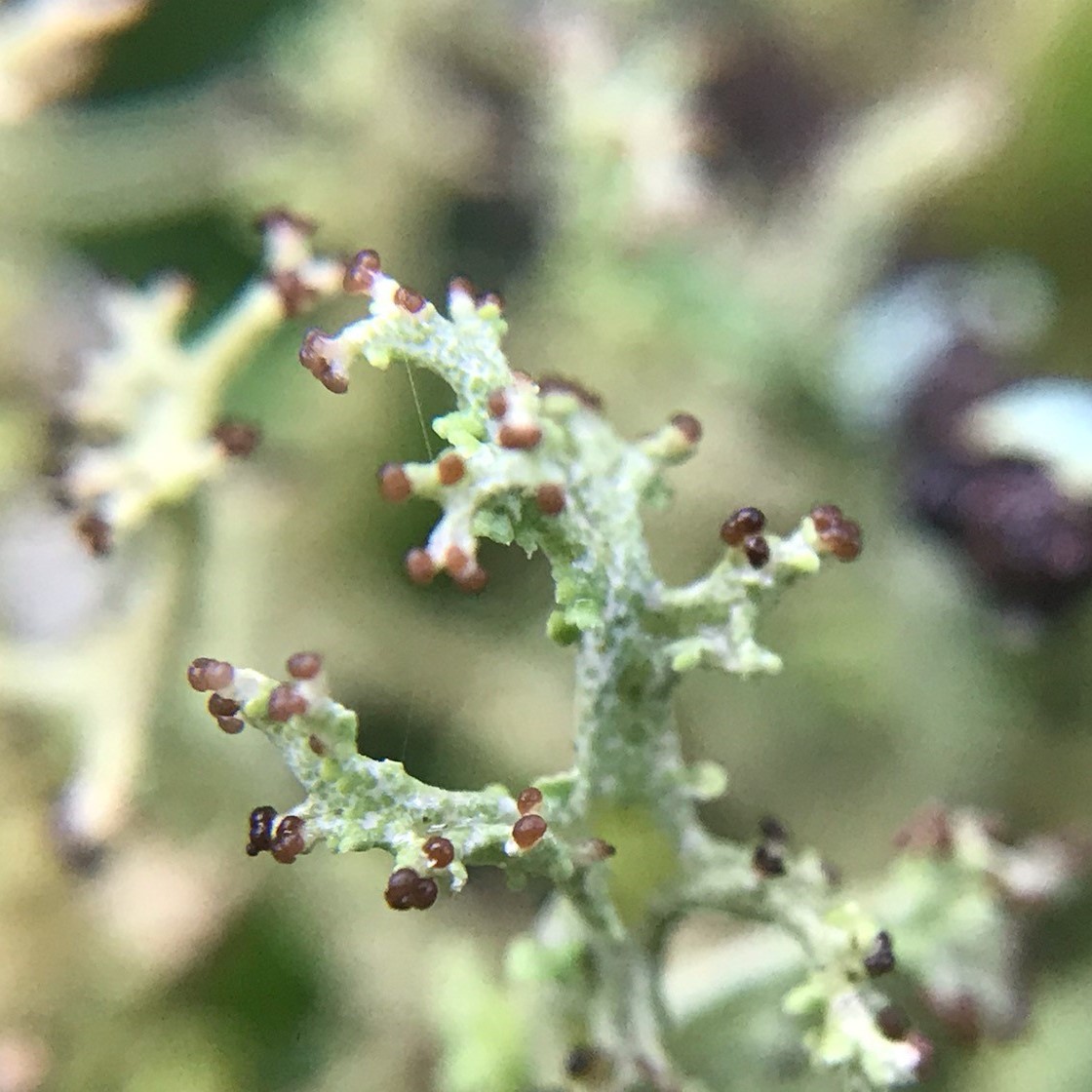
Cladonia furcata (possibly)
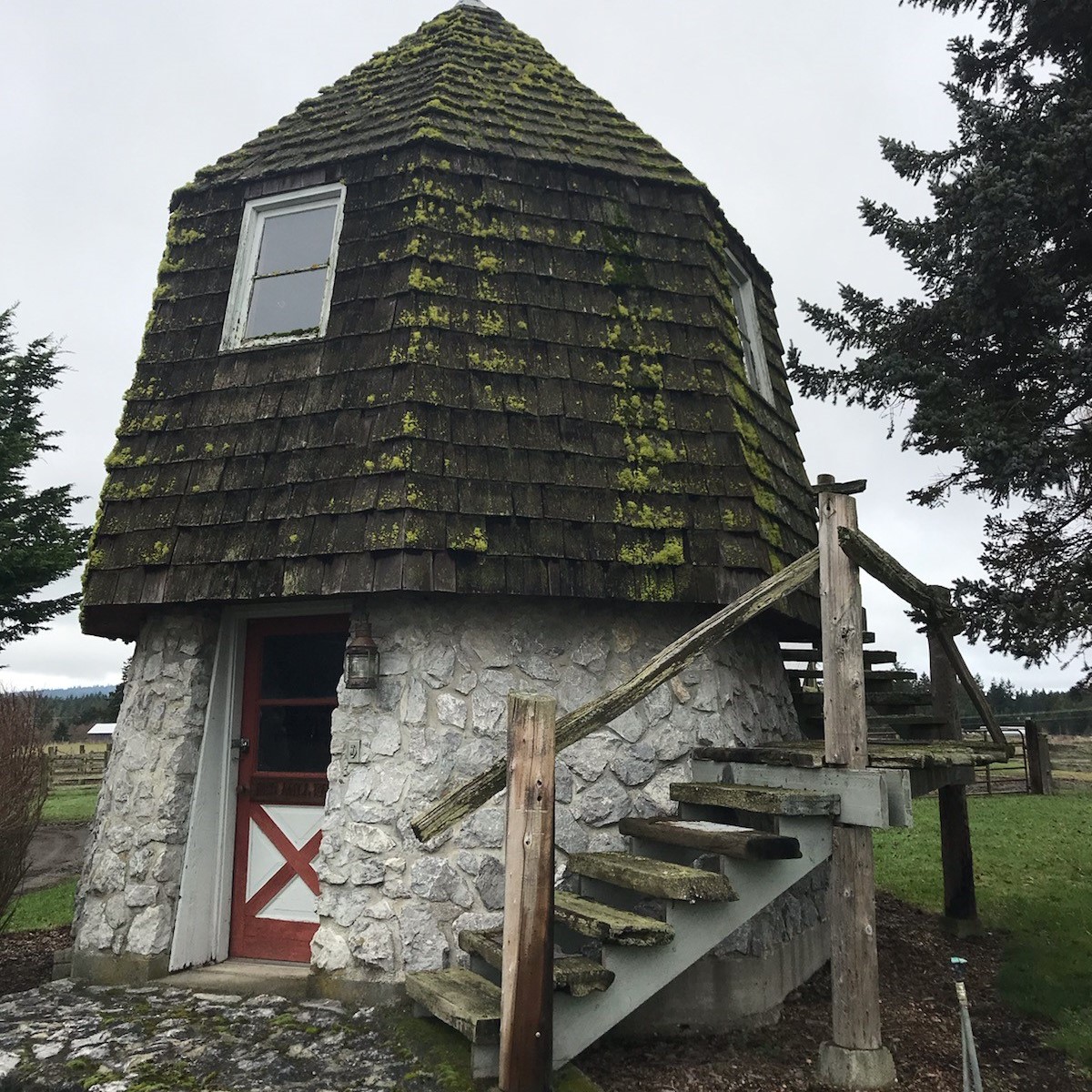
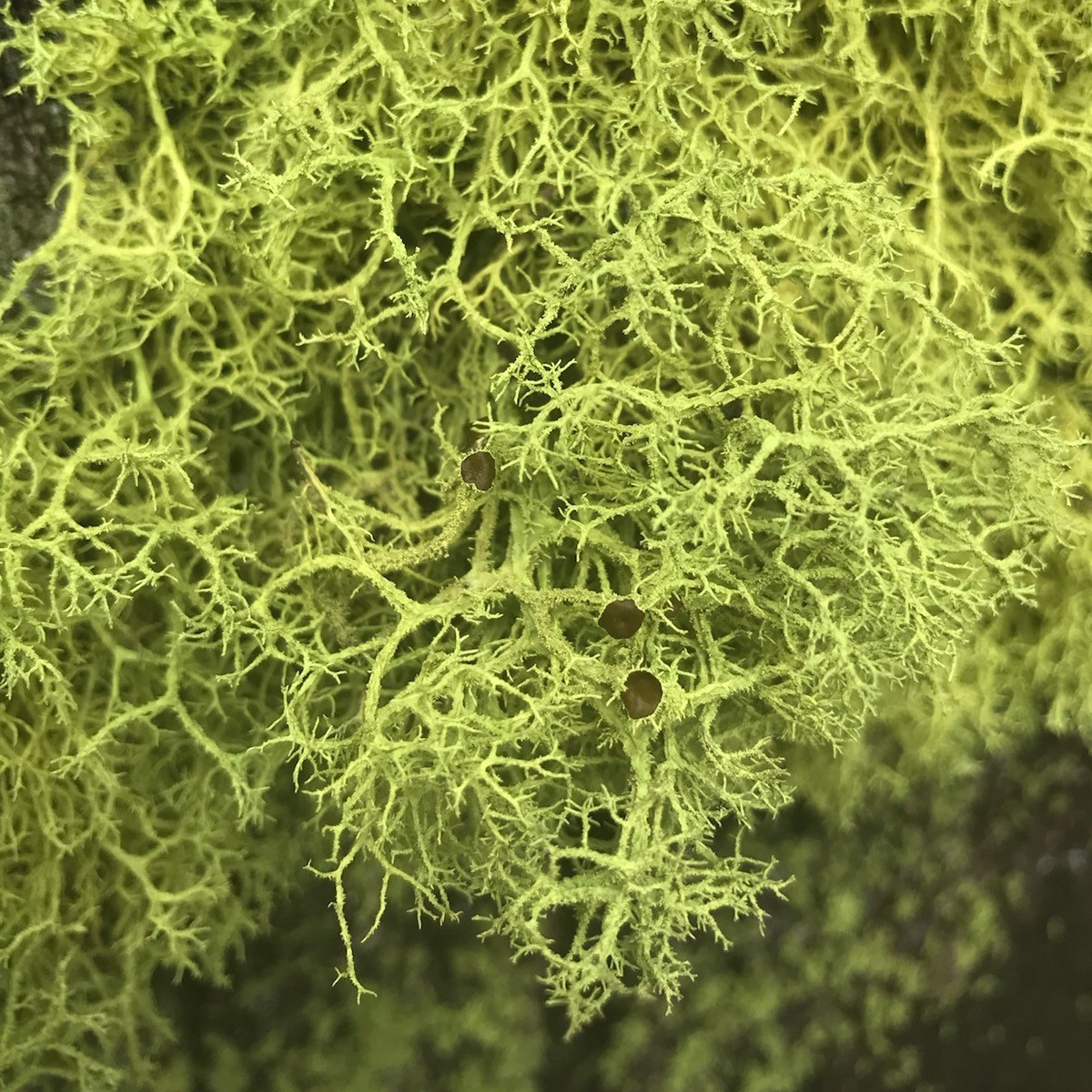
Letharia vulpina (wolf lichen)
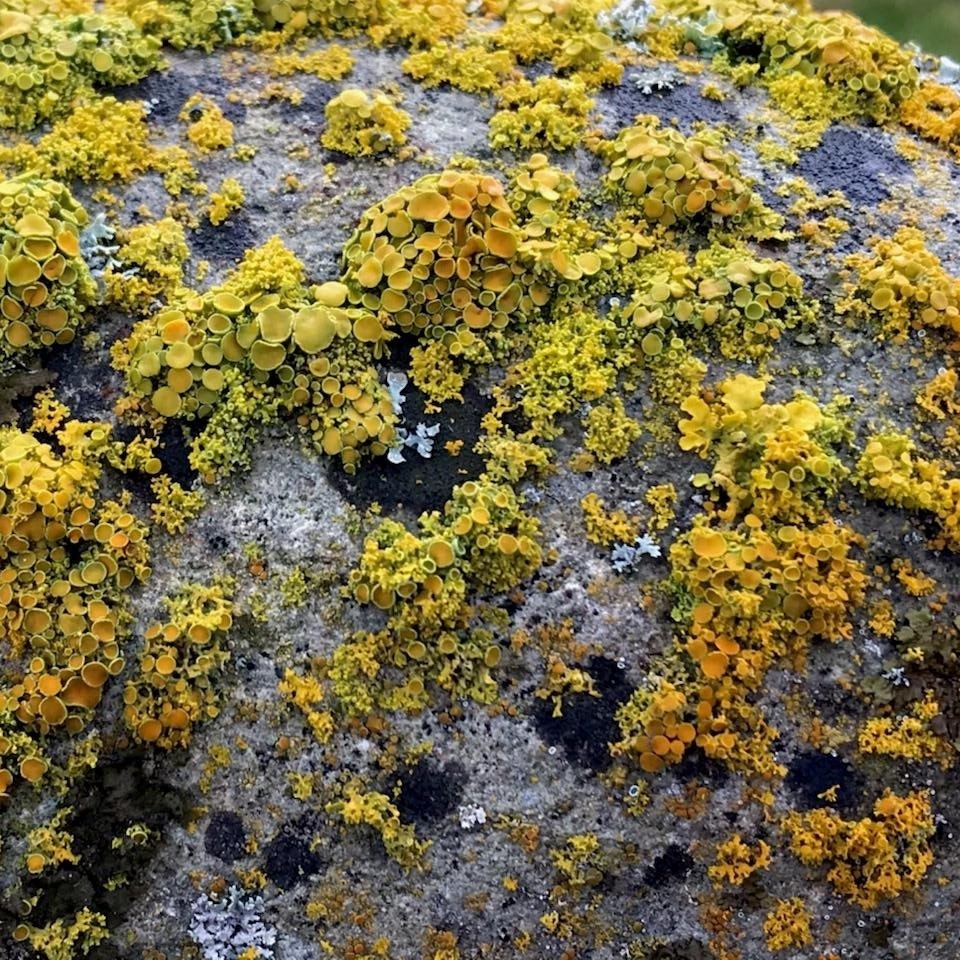
Xanthoria parientina (Maritime sunburst lichen)
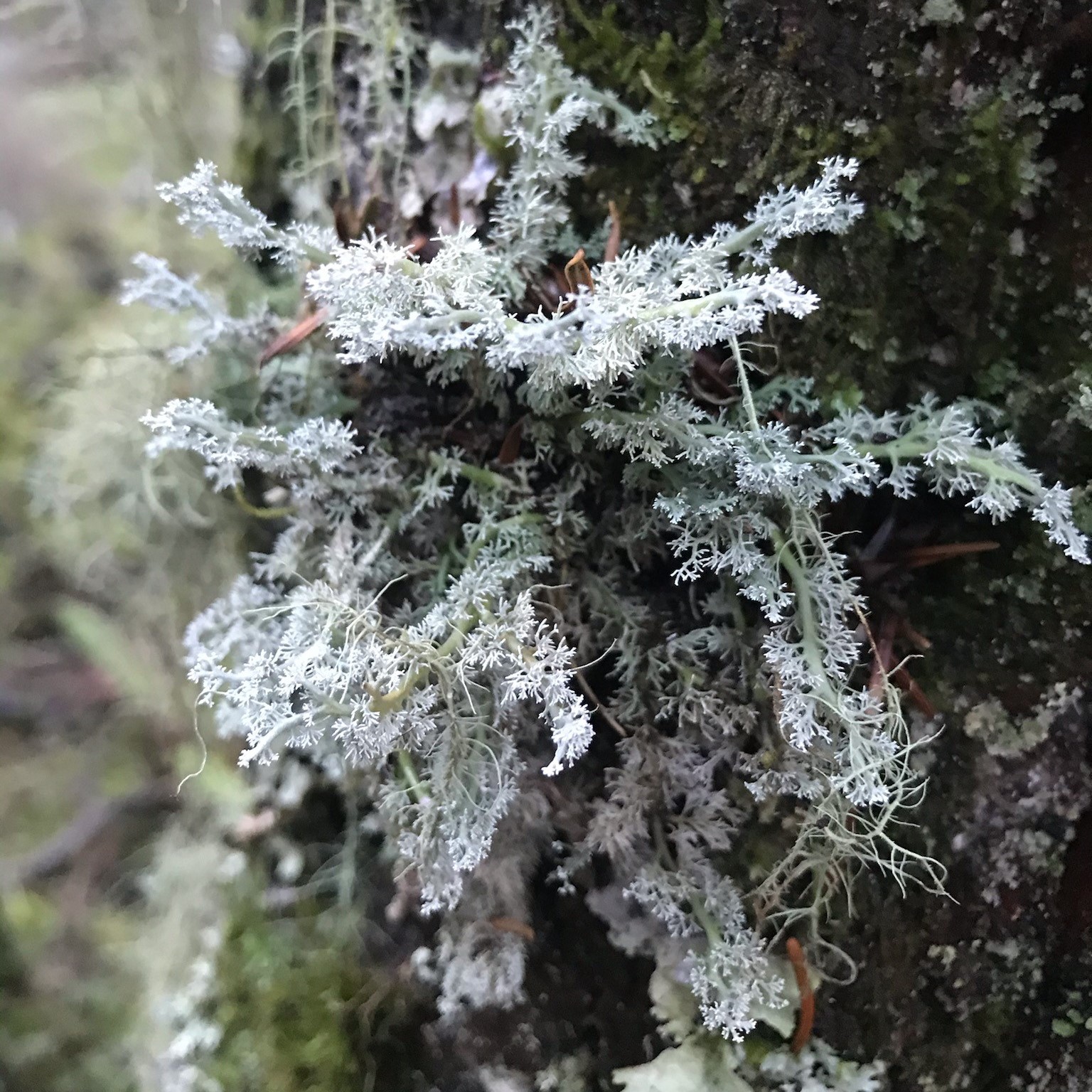
Sphaerophorus tuckermanii (clustered coral lichen)
